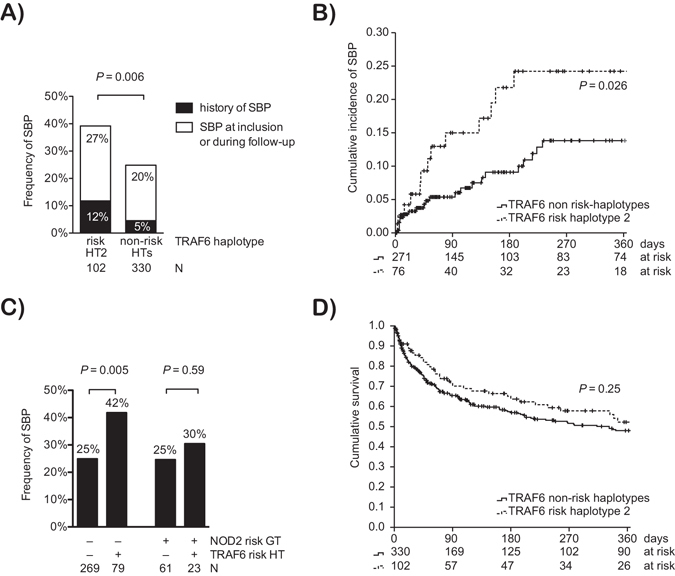Figure 2.

Association of TRAF6 haplotypes with SBP and survival. (A) Combined prospective and retrospective analysis. Frequency of SBP in patients stratified for the presence of the TRAF6 risk haplotype 2 (HT2) and other haplotypes (non-risk HTs). The frequency of SBP is given for SBP, which were well documented at baseline (history of SBP) and, which were diagnosed at inclusion or during follow-up. P value from Fisher’s exact test. (B) Prospective analysis. The cumulative incidence of a first episode of SBP in patients without a history of SBP and without SBP at inclusion is indicated and stratified for the presence of the TRAF6 risk haplotype 2. Data were right-censored at liver transplantation, death, or loss-to-follow-up. Patients at risk and the P value from log-rank test are indicated. (C) The frequency of SBP in patients stratified for the presence of the TRAF6 risk haplotype 2 (HT2) and other haplotypes (non-risk HTs) is given for patients carrying at least one of the NOD2 risk variants R702W, G908R or L1007fs and for patients with the NOD2 wild-types. P values from Fisher’s exact test. (D) Kaplan-Meier analysis of cumulative survival of the overall cohort is shown and stratified for the presence of the TRAF6 risk haplotype 2. Data were right-censored at liver transplantation or loss-to-follow-up. Patients at risk and the P value from log-rank test are indicated.
